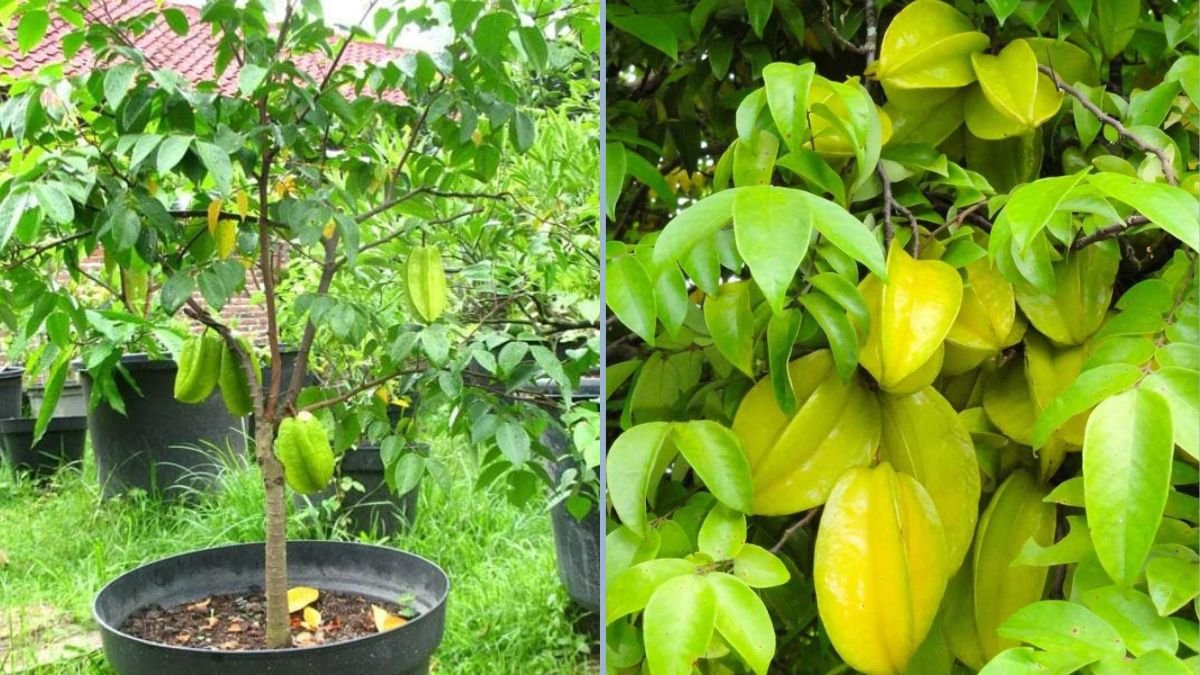Starfruit, also known as carambola, is a tropical fruit prized for its distinctive star shape, tangy-sweet flavor, and high nutritional value. Native to Southeast Asia, starfruit has gained popularity worldwide for its delicious taste, versatility in dishes, and impressive health benefits. Whether eaten fresh, juiced, or used in desserts, starfruit adds a refreshing, exotic touch to any meal.
In this guide, we’ll explore how to grow starfruit at home, care for the tree, and harvest delicious fruits, making it accessible even for backyard or container gardeners.
1. Why Grow Starfruit at Home?
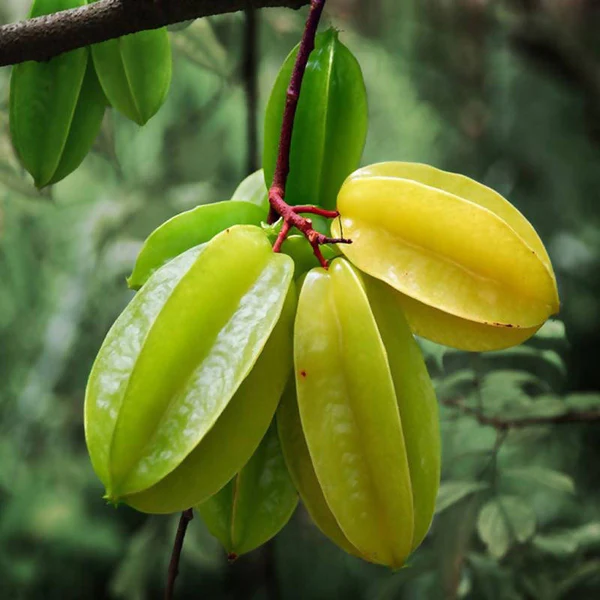
Growing starfruit at home comes with several benefits:
- Fresh fruits: Enjoy fresh, organic starfruits free from pesticides.
- Nutritional value: Rich in vitamin C, fiber, and antioxidants.
- Space efficiency: Can be grown in gardens or large containers.
- Aesthetic appeal: Attractive, glossy leaves and star-shaped fruits enhance home gardens.
- Sustainability: Reduces dependency on store-bought fruits and packaging.
Homegrown starfruit allows you to experience the full journey from seed to harvest while enjoying a healthy, exotic fruit.
2. Choosing the Right Starfruit Variety
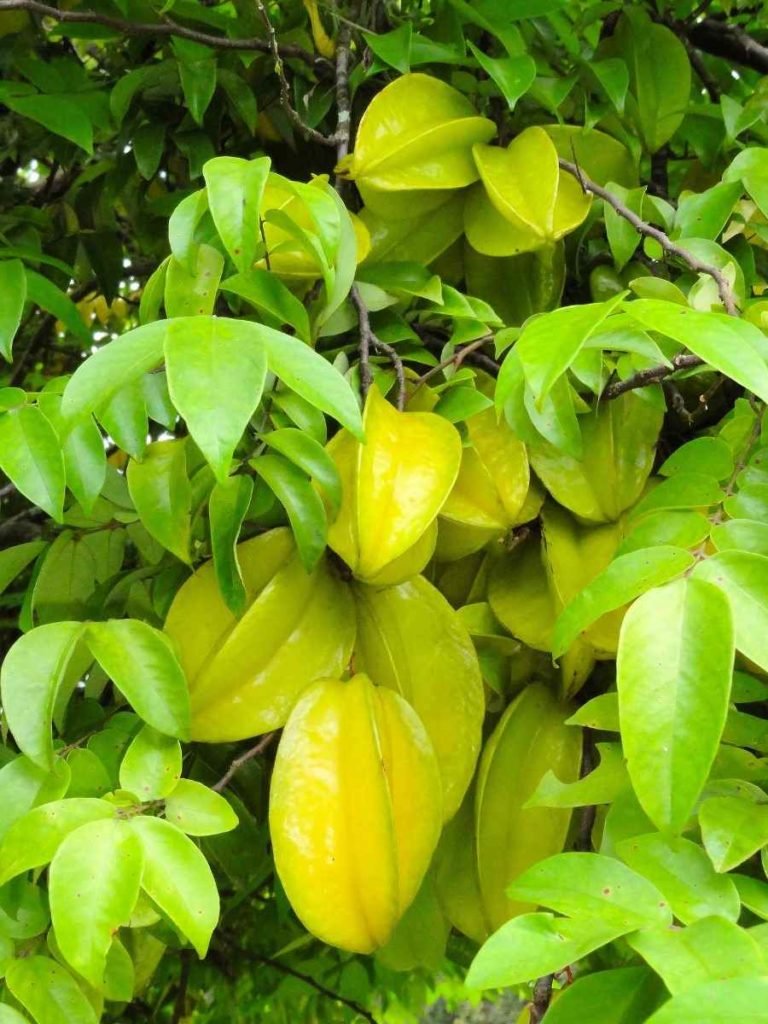
There are several starfruit varieties, but some are more suited for home cultivation:
- Arkin: Sweet, large, and easy to grow. Ideal for container planting.
- B10: Medium-sized, slightly tart, and prolific fruiting.
- Golden Star: Bright yellow, sweet, and ideal for small gardens.
Selecting the right variety ensures better growth, flavor, and yield.
3. Propagation: Seeds or Saplings
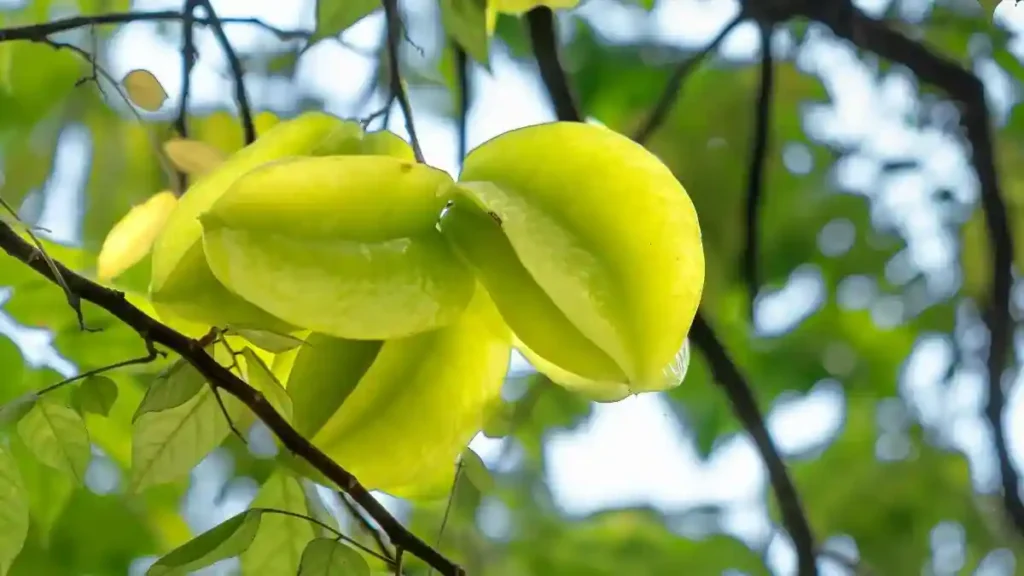
Starfruit can be grown from seeds, grafted saplings, or cuttings:
- Seeds: Extract seeds from a ripe fruit, clean them, and plant immediately for faster germination. Seed-grown trees may take longer to bear fruit.
- Grafted saplings: Offer faster fruiting (2–3 years) and consistent quality.
- Cuttings: Less common but possible with proper care.
💡 Tip: For quicker harvests, using a healthy grafted sapling is recommended.
4. Choosing the Right Location
Starfruit trees are tropical and require:
- Sunlight: At least 6–8 hours of direct sunlight daily.
- Temperature: Optimal range is 25–35°C (77–95°F). Protect young plants from frost.
- Air circulation: Good airflow reduces fungal infections and promotes healthy growth.
The right location ensures vibrant growth, flowering, and fruiting.
5. Growing Starfruit in Containers vs. Ground
Starfruit can thrive in both containers and open ground:
Containers:
- Use large pots (minimum 18–24 inches diameter and depth).
- Allows mobility for sunlight optimization.
- Ideal for urban gardens and balconies.
Ground:
- Plant in well-draining soil with rich organic matter.
- Space trees 15–20 feet apart for optimal growth.
- Suitable for tropical or subtropical regions.
Both methods produce healthy trees and delicious fruits if proper care is provided.
6. Soil Requirements
Starfruit prefers well-draining, fertile soil:
- Loamy soil: Ideal for nutrient retention and drainage.
- Slightly acidic to neutral pH (5.5–6.5): Enhances nutrient uptake.
- Organic matter: Compost or manure improves fertility and soil structure.
💡 Tip: Avoid heavy clay soils, which can retain excess water and cause root rot.
7. Planting Starfruit Trees
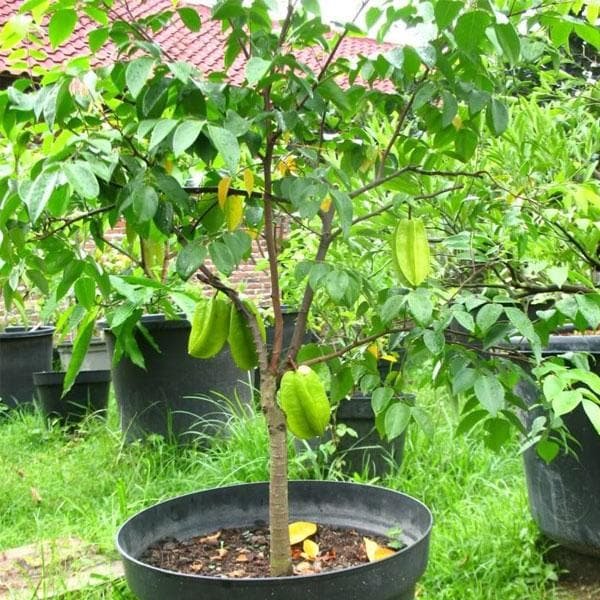
Follow these steps for successful planting:
For Saplings:
- Dig a hole twice the size of the root ball.
- Place the sapling in the center.
- Fill the hole with a mix of garden soil and compost.
- Water immediately and apply a thin layer of mulch.
For Seeds:
- Plant seeds 1–2 cm deep in seed trays or small pots.
- Keep soil moist and provide indirect sunlight.
- Transplant seedlings after 6–8 months when they have 4–6 leaves.
Proper planting ensures strong roots and healthy growth.
8. Watering Starfruit Trees

Watering is crucial, especially for young trees:
- Keep soil consistently moist but not waterlogged.
- Water deeply 2–3 times per week, adjusting for weather conditions.
- Mulch the soil surface to retain moisture and maintain temperature.
Consistent watering promotes vigorous growth and abundant fruiting.
9. Fertilization for Healthy Growth
Fertilization encourages strong growth, flowering, and fruiting:
- Nitrogen-rich fertilizer: For vegetative growth.
- Phosphorus and potassium: Boost flowering and fruit quality.
- Frequency: Apply balanced fertilizer every 6–8 weeks during the growing season.
💡 Tip: Avoid over-fertilization, which can lead to excessive leaf growth at the expense of flowers.
10. Supporting Young Trees
Young starfruit trees may need support to grow upright:
- Use a stake or bamboo support for stability.
- Tie the trunk loosely to prevent bending or breakage.
- Remove supports gradually as the tree matures.
Proper support ensures strong structure and optimal fruit production.
11. Pruning Starfruit Trees
Pruning promotes healthy growth and high-quality fruits:
- Remove dead, weak, or diseased branches.
- Trim overcrowded branches to allow sunlight penetration.
- Prune after harvesting to prepare for the next flowering cycle.
Well-pruned trees produce larger, sweeter fruits and resist diseases.
12. Flowering and Pollination
Starfruit trees produce beautiful fragrant flowers:
- Most varieties are self-pollinating, but pollinators improve fruit set.
- Hand pollination can be used for indoor or balcony trees.
- Proper pollination ensures abundant fruiting and larger fruits.
13. Harvesting Starfruit
Patience is key — starfruit trees usually start fruiting 2–3 years after planting:
- Fruits are ready when they turn yellow and slightly soft.
- Twist or cut fruits gently to avoid damaging the branches.
- Harvest regularly to encourage continued flowering and fruiting.
Homegrown starfruits are refreshing, nutritious, and perfect for fresh consumption, juices, or desserts.
14. Common Pests and Diseases
Starfruit trees are hardy but can face:
- Fruit flies: Protect fruits with netting or bags.
- Aphids and mealybugs: Use neem oil or insecticidal soap.
- Fungal diseases: Ensure good air circulation and avoid waterlogging.
Regular monitoring ensures healthy trees and quality fruits.
15. Long-Term Care for Starfruit Trees
For sustained growth and fruiting:
- Mulch regularly to retain soil moisture.
- Fertilize seasonally to support growth and flowering.
- Prune annually for healthy structure and optimal fruit production.
- Repot container-grown trees every 2–3 years to accommodate growth.
With proper care, starfruit trees can produce fruits for many years, providing both beauty and nutrition to your home garden.
16. Final Thoughts: Growing Starfruit at Home
Growing starfruit is rewarding, fun, and practical. With the right variety, proper soil, sufficient sunlight, regular watering, fertilization, and pruning, you can enjoy fresh, exotic fruits at home.
Whether in a garden or a large container on a balcony, starfruit trees provide beautiful foliage, fragrant flowers, and delicious fruits that are perfect for family consumption.
By following these step-by-step guidelines, you can experience the joy of homegrown starfruit, from planting seeds or saplings to harvesting and enjoying the sweet, tangy fruits year after year.
Growing starfruit at home allows anyone to bring a tropical touch to their garden or balcony. With proper care and patience, even beginners can enjoy the satisfaction of cultivating this beautiful and nutritious fruit.
